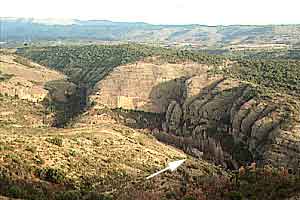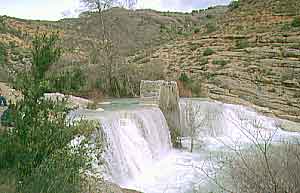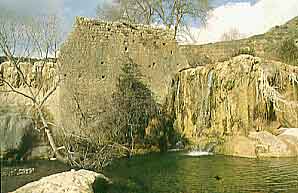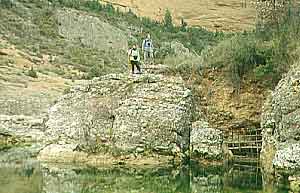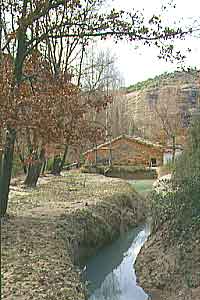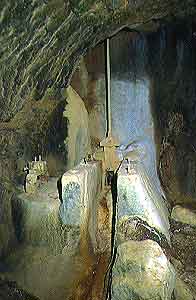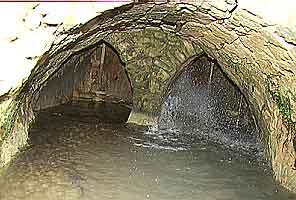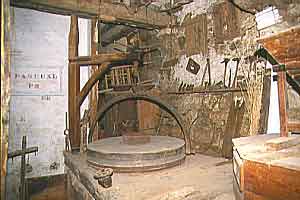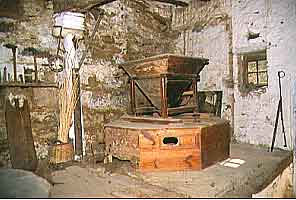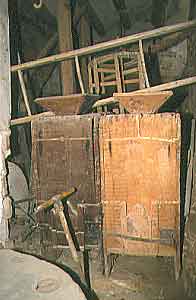Path: Introduction -
Visit the mills; catalogue - Alquézar

Mills in Alto Aragón — harinero
Alquézar

Alquézar is easily reached from Huesca and Barbastro. Halt just before
entering the village at the Ermita de San Antonio and walk the dirt road down.
Or, from the village center, follow the signposts fuente (mineral spring).
Old maps show this mill as
Molino de arriba(the upper mill). The mill is on the Río Vero. We had the luck that the owners of this mill invited us for a photosession inside.
Pictures: 29.xii.1994, 31.xii.1998 and 02.iii.2003
